Affiliate links on Android Authority may earn us a commission. Learn more.
Pixel 7 vs Pixel 7 Pro: Which one should you buy?
Published onAugust 30, 2023
The Pixel 7 and Pixel 7 Pro are among the best Google smartphones ever made. Compared to their predecessors, the duo deliver refined designs, upgraded imaging capabilities, faster biometric and processing hardware, and a suite of new Pixel-only features. That said, choosing between the regular and XL variant still isn’t easy, especially given the subtle yet important differences that aren’t obvious at first glance. So in this article, let’s pit the Google Pixel 7 vs the Pixel 7 Pro and help you decide which one is right for you.
AT A GLANCE
If you're in a hurry, here's a quick summary of the differences between the Pixel 7 and Pixel 7 Pro.
The Pixel 7 Pro offers:
- A 6.7-inch Quad HD display with a refresh rate of up to 120Hz, compared to the Pixel 7's smaller 6.3-inch Full HD+ display with a 90Hz refresh rate.
- A telephoto lens on the rear, which is capable of 5x optical zoom.
- Autofocus on the ultrawide lens, which assists with close-up shots or macro photography.
- A 15% larger battery than the Pixel 7, but at the cost of increased weight.
- The highest storage option — 512GB, which is double the Pixel 7's 256GB maximum storage.
- An extra 4GB of available RAM compared to the Pixel 7.
Keep reading to know more about how the Pixel 7 and Pixel 7 Pro differ from each other.
Pixel 7 vs Pixel 7 Pro: Design and display
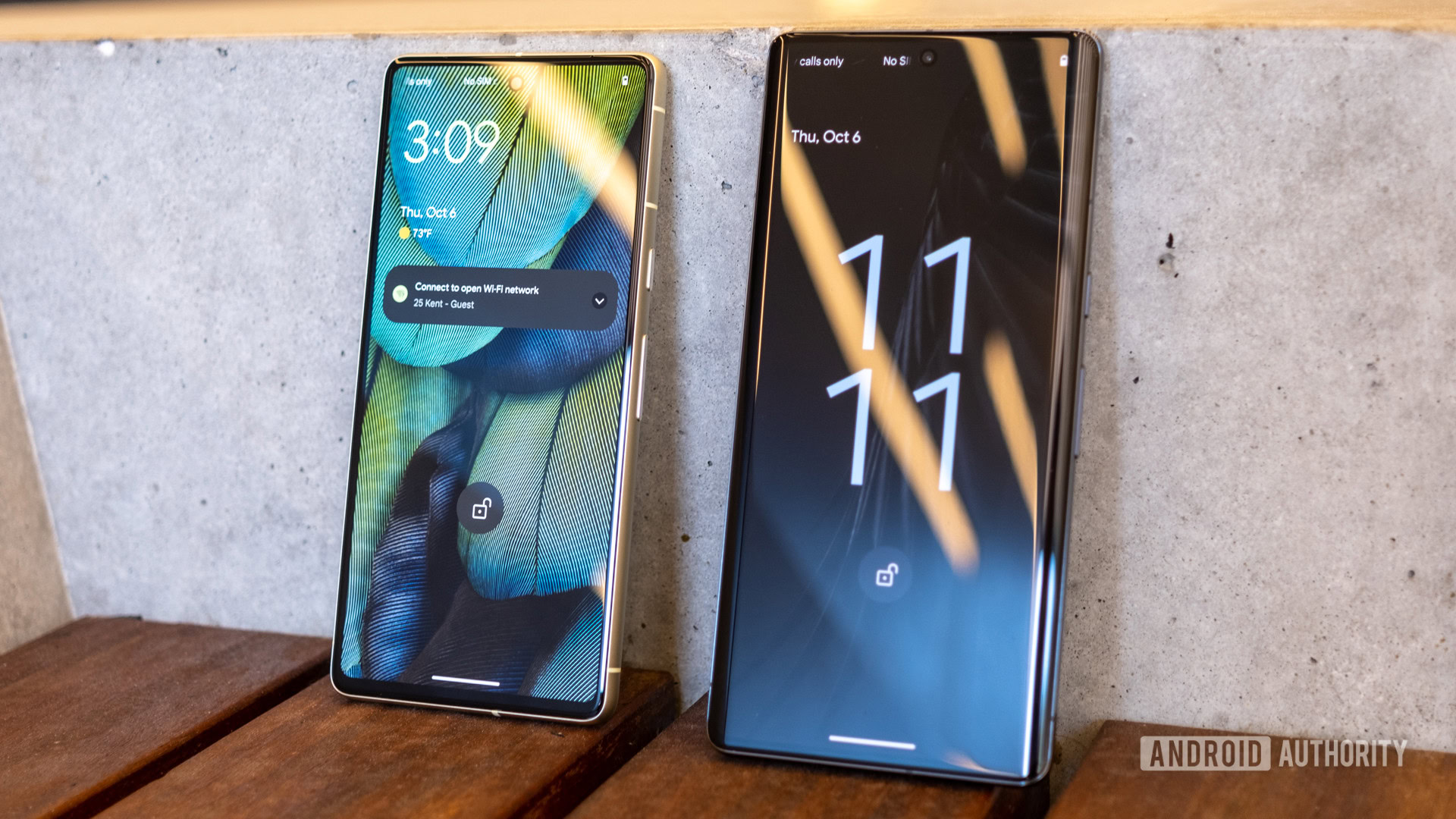
With the Pixel 6 series in 2021, Google introduced a brand-new, eye-catching design. This year’s Pixel 7 models continue to iterate upon that beloved formula with small, but welcome refinements. For example, the camera bar has changed from black glass to recycled aluminum, which is matte on the Pixel 7 and polished on the Pixel 7 Pro. It also flows naturally into the rest of the phone’s frame, making it look a bit more sophisticated.
The base Pixel 7 is lighter than last year’s model, thanks to a 0.1-inch display size reduction and diminished battery capacity, but more on that in a later section. The Pixel 7 Pro, meanwhile, hasn’t changed as much and remains noticeably heavier at 212g.
The Pixel 7 is not just smaller than the Pro, it's also much lighter this year.
Both Pixel 7 models feature AMOLED displays, but are nothing alike otherwise. The higher-end Pixel 7 Pro’s 6.7-inch Quad HD panel is a lot larger and pixel-dense than the 6.3-inch Full HD display you get on the Pixel 7. The Pixel 7’s refresh rate is technically lower at 90Hz (versus 120Hz on the Pro) too, but the difference is relatively minor in the real world.
The Pixel 7 and Pixel 7 Pro both got a huge brightness boost this year, around 25%. This upgrade makes them equally easier to use outdoors or for playing back HDR videos. The Pro model also has waterfall (curved) edges and LTPO display technology, the latter of which can help save battery — at least in theory.
Pixel 7 vs Pixel 7 Pro: Cameras
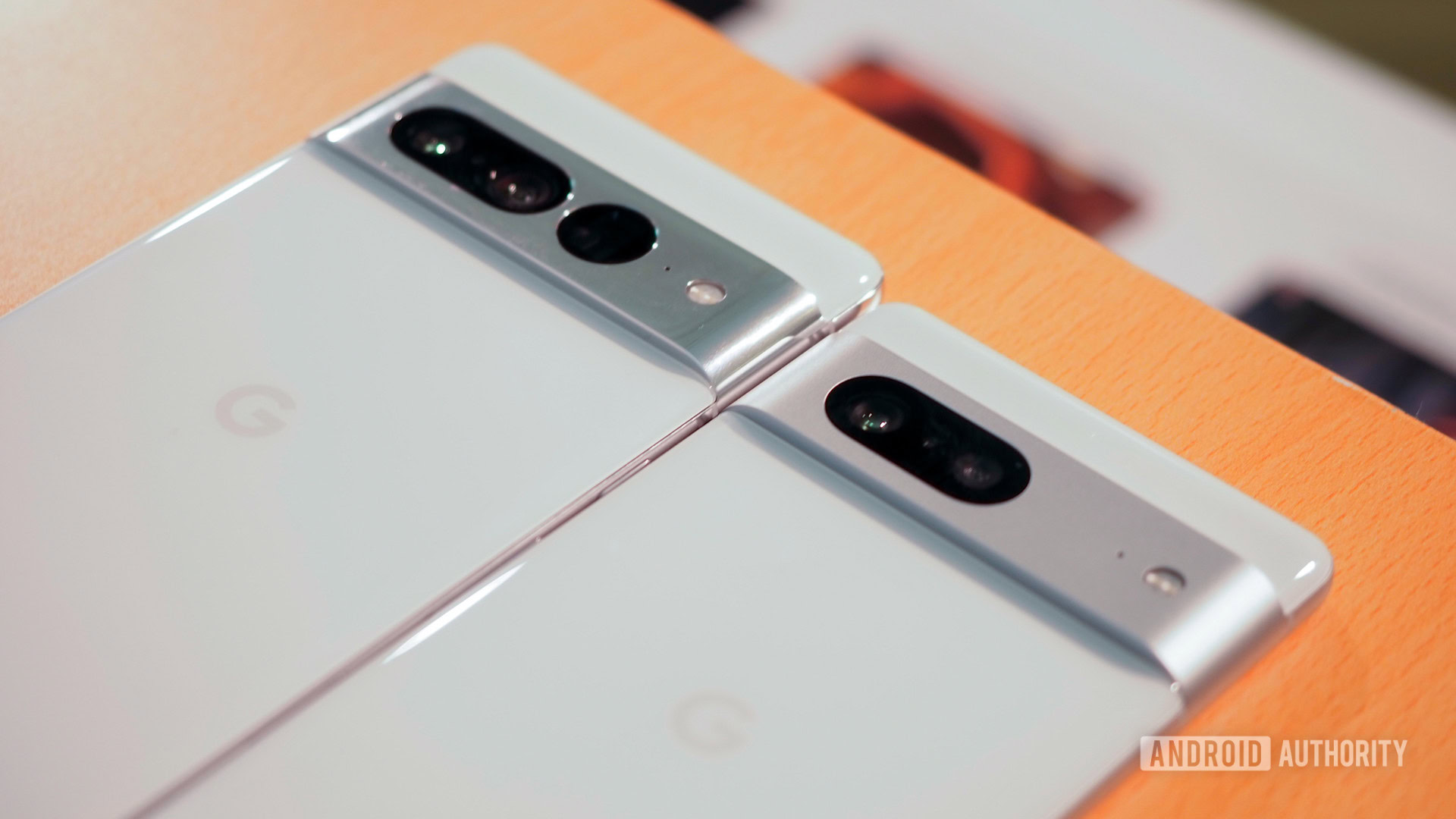
Just like last year, the Pixel 7 Pro gains a few camera features compared to the base variant. The telephoto lens, for example, remains exclusive to the larger phone and can come in handy as it delivers up to 5x optical zoom or 30x of Google’s super-resolution zoom. The base Pixel 7 can zoom in to 2x too, but this functionality relies on software and a digital crop of the main 50MP sensor instead.
See what it can do: We tested the Pixel 7 Pro’s 1x to 30x telephoto zoom
The Pixel 7 Pro’s 12MP ultrawide lens can also double up as a macro shooter. It’s a feature we’ve seen on some other smartphones like the iPhone, but it’s brand new to the Pixel series. The base Pixel 7 lacks autofocus on its ultrawide lens, which makes it unsuitable for macro photography.
Apart from those two features, however, the Pixel 7 and Pixel 7 Pro offer some of the best smartphone cameras on the market. In fact, the Pixel 7 even got a few upgrades over last year, with the most notable one being the upgraded 10.8MP selfie shooter. Both smartphones also gained 4K 60fps recording support on all lenses.
Pixel 7 vs Pixel 7 Pro: Battery and performance
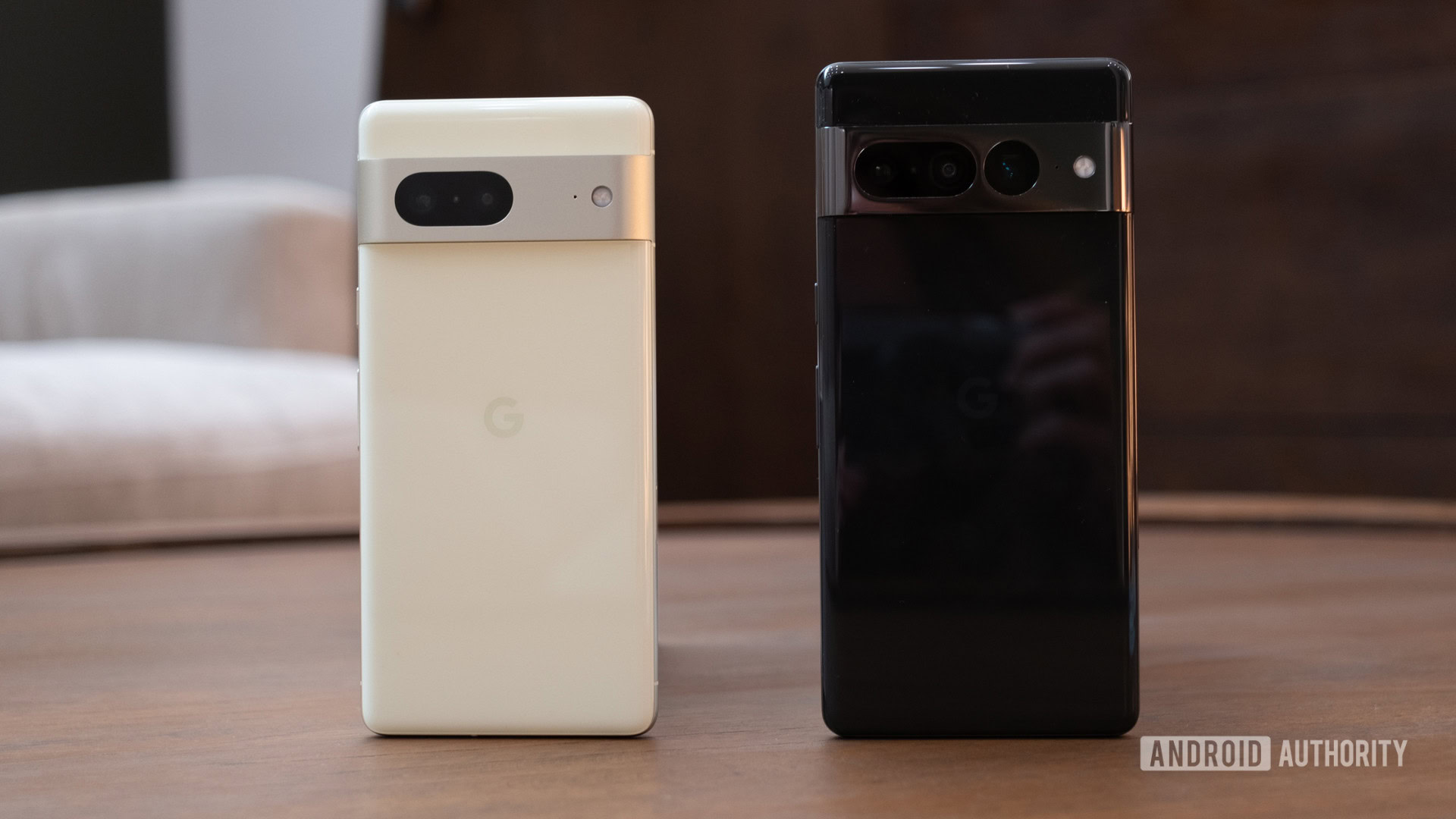
The Pixel 7 took a hit to its battery capacity this year, dropping from 4,614 mAh to 4,355 mAh. But is the smaller battery noticeable in day-to-day use? Thankfully not. In our Pixel 7 review, we found that the phone comfortably made it to the end of the day even with heavy gaming and web browsing sessions.
Still, the Pixel 7 Pro has a larger battery on paper. Its capacity also remains virtually unchanged from last year at 5,000 mAh. Our Pixel 7 Pro review also indicates that you’ll easily squeeze a full day’s worth of life out of it.
While both Pixel 7 models offer decent battery life, charging speeds are not very impressive.
Battery life, however, is only one side of the equation. If you manage to drain the battery in the middle of the day, you’d expect fast charging to save the day. However, the Pixel 7 series is one of the few modern flagships to disappoint in this regard. Even though Google recommends using its 30W charging adapter, the Pixel 7 pulls just 21W from the adapter. The Pixel 7 Pro is not significantly better either — charging power peaks at just 23W. Thankfully, fast wireless charging is present on both models, provided you buy a Pixel Stand. Expect slower wireless charging on a regular Qi charger.
Circling back to some good news, both variants of the Pixel 7 share the same processing hardware, just like their predecessors. The Pixel 7 Pro does have 4GB more RAM, but it’s unlikely that you’ll be disappointed with the 8GB of RAM on the base Pixel 7.
The new Google Tensor G2 SoC offers incremental improvements this generation, but still offers plenty of performance for every use case except long gaming sessions. It also boasts an upgraded TPU that enables a host of new imaging features, including faster Night Sight and Cinematic blur. Additionally, machine learning tasks such as Assistant voice typing should consume less battery.
Read more: Tensor G2 benchmarked versus the competition
Pixel 7 vs Pixel 7 Pro: Colors and pricing
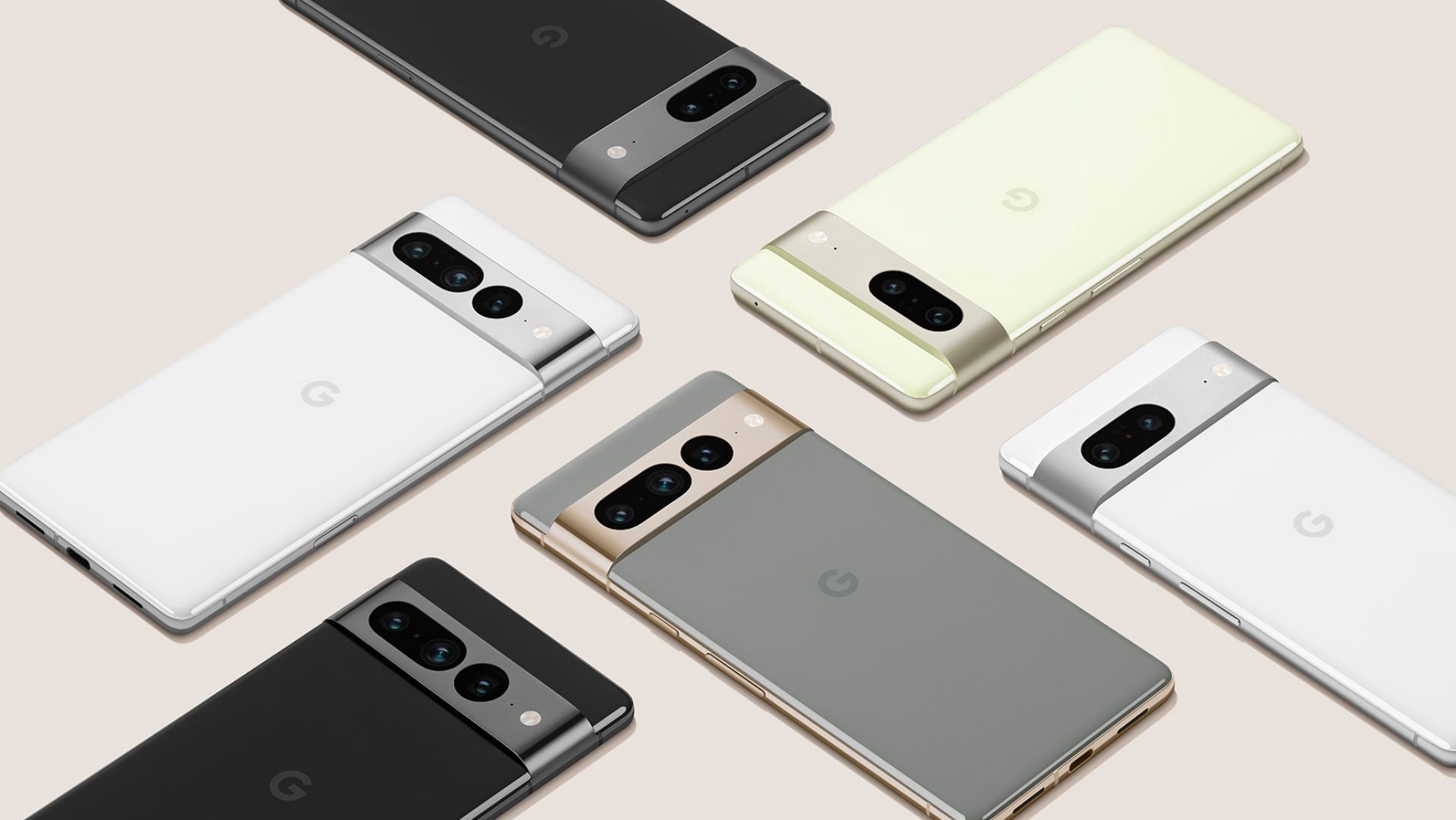
Pixel 7
- 128GB: $599 / £599 / €649
- 256GB: $699 / £699 / €749
Pixel 7 Pro
- 128GB: $899 / £849 / €899
- 256GB: $999 / £949 / €999
- 512GB: $1,099 / £1,049 / €1,099
Even though both Pixel 7 smartphones retain the same design language this year, the colors on offer are far more muted than the vibrant options of the previous generation. Still, if you’re after an eye-catching look, Lemongrass on the Pixel 7 and Hazel on the Pixel 7 Pro are exclusive colors that bring a splash of yellow or greenish-gray along with a gold camera bar. Alternatively, you can pick between Obsidian (black) and Snow (white) on either model.
Pricing remains unchanged from last year, which makes both Pixel 7 models excellent value propositions in their respective price brackets. At $599 for the 8GB/128GB Pixel 7, you’ll be hard-pressed to find a more capable Android flagship smartphone. Meanwhile, the $899 12GB/128GB Pixel 7 Pro is around $100 cheaper than most of the competition. For either model, expect to pay $100 extra for a storage increase to 256GB.
These days, you may find both smartphones on sale as we’re gearing for the launch of the Pixel 8 series.


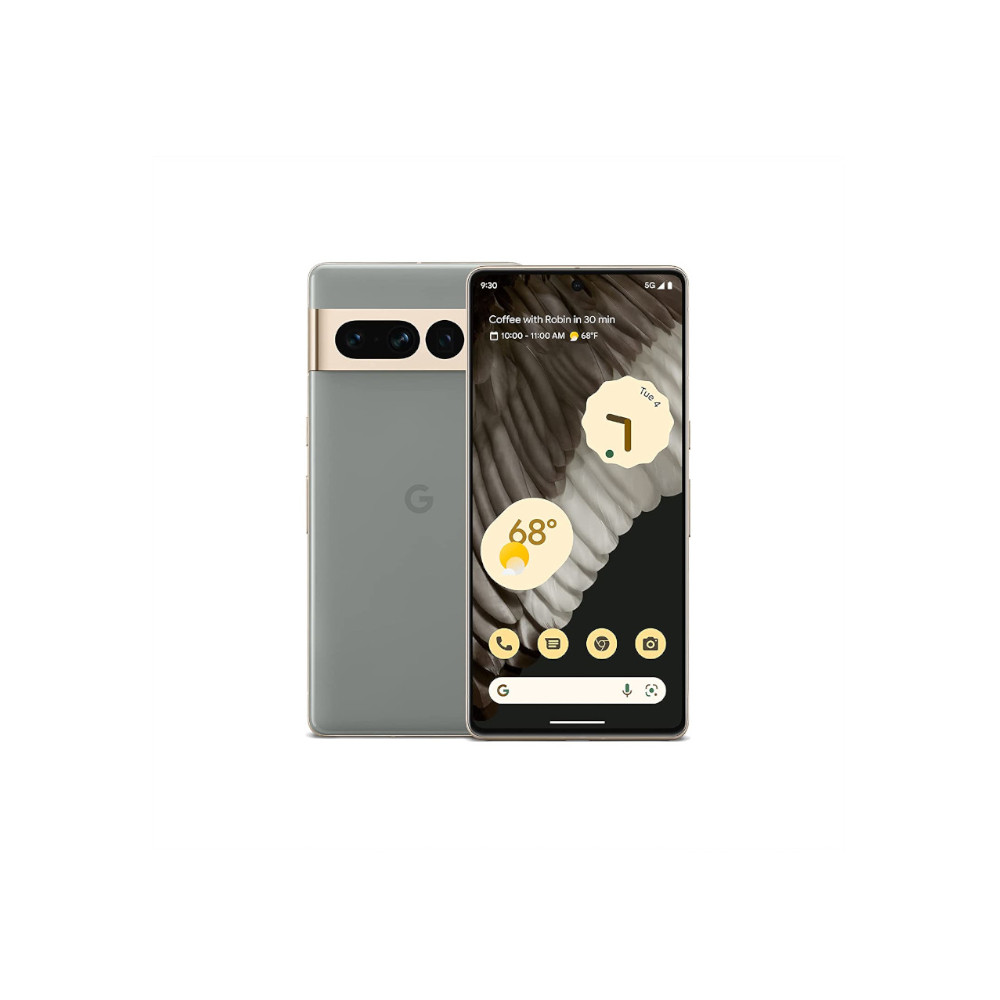

Pixel 7 vs Pixel 7 Pro: Specs
| Pixel 7 | Pixel 7 Pro | |
|---|---|---|
Display | Pixel 7 6.32 inch 2,400 x 1,080 pixels 1,400 nits 90Hz OLED | Pixel 7 Pro 6.7 inch 3,120 x 1,440 pixels 1,500 nits 120Hz pOLED |
Processor | Pixel 7 Tensor G2 | Pixel 7 Pro Tensor G2 |
RAM | Pixel 7 8GB | Pixel 7 Pro 12GB |
Storage | Pixel 7 128GB / 256GB | Pixel 7 Pro 128GB / 256GB |
Power | Pixel 7 4,355mAh Li-Ion Wireless charging up to 72 hours of runtime with Extreme Battery Saver | Pixel 7 Pro 5,000mAh Li-Ion Wireless charging up to 72 hours runtime with Extreme Battery Saver |
Cameras | Pixel 7 Rear: - 50MP main 1.2 μm, ƒ/1.85, 82-degree FoV 1/1.31-inch sensor OIS and EIS - 12MP ultrawide 1.25 μm, ƒ/2.2, 114-degree FoV - Laser AF Front: - 10.8MP 1.22 μm, ƒ/2.2, 92.8-degree FoV | Pixel 7 Pro Rear: - 50MP main 1.2 μm, ƒ/1.85, 82-degree FoV 1/1.31-inch sensor OIS and EIS - 12MP ultrawide 1.25 μm, ƒ/2.2, 125.8-degree FoV, autofocus - 48MP telephoto 0.7 μm, ƒ/3.5, 20.6-degree FoV OIS 5x optical zoom, 30x Super Resolution - Laser AF Front: - 10.8MP 1.22 μm, ƒ/2.2, 92.8-degree FoV |
Connectivity | Pixel 7 2G, 3G, 4G, 5G Bluetooth 5.2 NFC Wi-Fi 802.11ax | Pixel 7 Pro 2G, 3G, 4G, 5G Bluetooth 5.2 NFC Wi-Fi 802.11ax |
Dimensions | Pixel 7 155.64 x 73.16 x 8.7mm | Pixel 7 Pro 162.9 x 76.55 x 8.9mm |
Software | Pixel 7 Android 13 | Pixel 7 Pro Android 13 |
Durability | Pixel 7 IP68 | Pixel 7 Pro IP68 |
Will casual users notice the difference between the Pixel 7 and 7 Pro? The Verdict
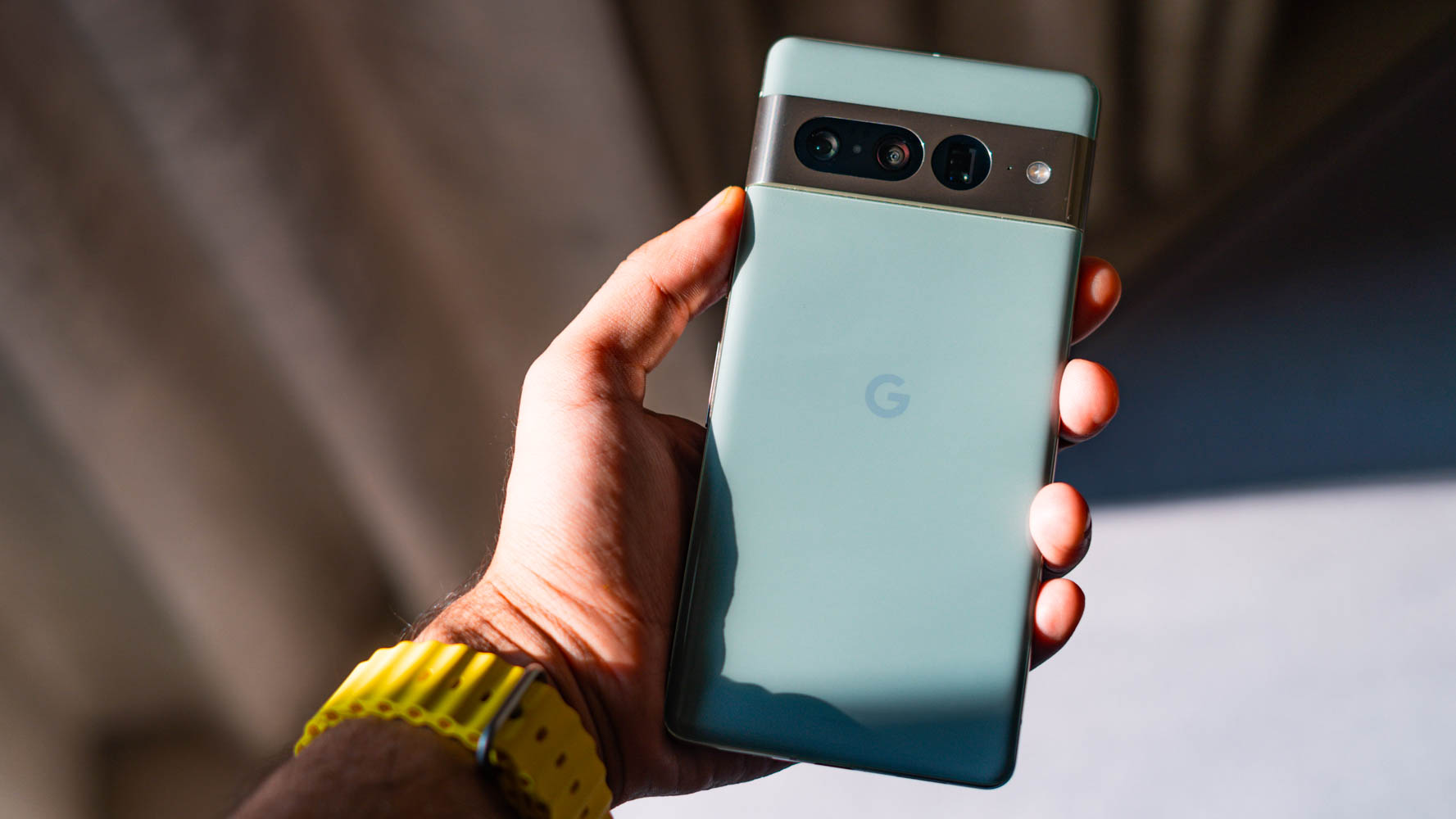
If you aren’t a heavy smartphone user, chances are that you’re debating whether the extra $300 for the Pixel 7 Pro is worth it or not. It’s indeed a question worth asking, since the Pixel 7 is a very good value proposition right out of the gate, especially compared to much of the competition.
Unlike the base Galaxy S22 or other similarly affordable flagship smartphones, the Pixel 7 doesn’t cut down on too many aspects like screen size and still offers respectable battery life. It also keeps the Tensor G2 SoC, which means that you won’t experience slowdowns in day-to-day usage. Put another way: both have the essentials of a smartphone nailed down.
The Pixel 7 and 7 Pro both offer everything an average user would need from a smartphone.
That said, the Pixel 7 Pro does make a lot of sense if you care about having the best battery life and a telephoto lens. Many people also prefer larger screens, which gives the Pixel 7 Pro a further edge especially as the base variant is a smidge smaller this generation. Google has also reserved the faster 120Hz refresh rate and 512GB storage option for the higher-end smartphone. Both fall squarely in the nice-to-have category for discerning users.
Ultimately, the decision boils down to the specifications you value the most. If speed and software performance are the only things that matter the most to you, the Pixel 7 won’t disappoint. But if you’re after the best of what Google has to offer in terms of hardware, the Pixel 7 Pro is the phone for you.
With the objective comparison out of the way, which Pixel 7 model will you pick?